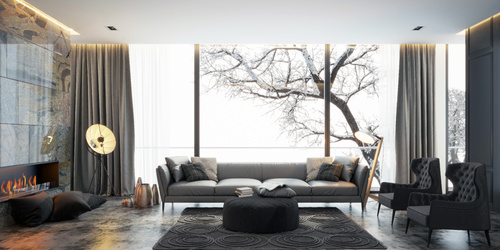Hotel curtains

An introduction to the world of hotel curtains When you enter a hotel, one of the first items you will notice are the hotel curtains. They are an...
More »The backyard garden is an ideal place for rest and relaxation. Morning coffee, a moment with a book, meeting friends or just staring at the sky - everything "tastes different" in the garden.
Our pleasure is not only lazing around, but also caring for the garden and taking care of it to look beautiful. Decorative plants, flowering flowers - all this makes our garden unique. Everyone is different, we will not find two identical.
Garden plants are one, the other cool garden decoration can become elements of street furniture; one of the most interesting are the pergolas. The pergola is a charming decoration, and at the same time a place where you can relax in the shade during hot weather or take shelter from a little rain. Its design usually consists of high posts connected by transverse beams or a truss.
The pergola can be placed in any part of the garden or, for example, by the terrace. An effective use of pergolas is also creating passages (separating subsequent parts of the garden) and gates (when we set them at the entrance). Its plants are adorned with high-stem plants.
Creeping ornamental plants
Garden pergolas can beautifully decorate a backyard garden or plot. They can be planted with different varieties of plants; depending on the design of the rest of the garden and our taste. When choosing, we should also decide on plants growing quite quickly, so that the effect does not have to wait another 10 years. Overgrowing the structure will create a shaded and charming space. At the same time, they will become a unique decoration of the garden.
Below are some suggestions that can help you choose the plant that you want to grow on the pergola:

An introduction to the world of hotel curtains When you enter a hotel, one of the first items you will notice are the hotel curtains. They are an...
More »
Although roller shutters are primarily known as window covers, they can also be successfully thought of as a security solution for balcony doors and glazed...
More »
Ways of interior arrangement and decorating trends are a topic that is followed not only by people associated with the industry. What decorators propose is...
More »